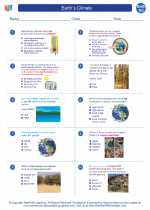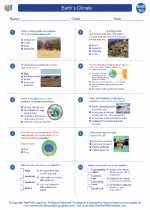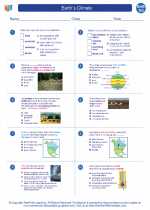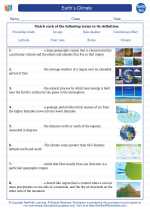Air Pressure
Air pressure is the force exerted by the weight of air in the atmosphere. It is the result of the constant bombardment of air molecules on a surface. The pressure exerted by the air varies with altitude, temperature, and weather conditions. Understanding air pressure is crucial in meteorology and understanding atmospheric processes.
Factors Affecting Air Pressure
Several factors influence air pressure:
- Altitude: As altitude increases, air pressure decreases because there are fewer air molecules pressing down from above.
- Temperature: Warmer air is less dense and exerts lower pressure, while colder air is denser and exerts higher pressure.
- Humidity: Moist air is less dense than dry air, so it exerts less pressure.
- Weather Systems: High-pressure systems are associated with clear, dry weather, while low-pressure systems are associated with cloudy, wet weather.
Measuring Air Pressure
Air pressure is commonly measured using a barometer. The two main types of barometers are mercury and aneroid barometers. Mercury barometers measure air pressure by balancing the weight of a column of mercury with the atmospheric pressure. Aneroid barometers use a small, flexible metal box called an aneroid cell to measure pressure changes.
Units of Air Pressure
Air pressure is typically measured in millibars (mb) or inches of mercury (inHg). Standard atmospheric pressure at sea level is about 1013.25 millibars or 29.92 inches of mercury.
Effects of Air Pressure
Changes in air pressure can affect weather patterns, including the formation of high and low-pressure systems, wind patterns, and the likelihood of precipitation. Additionally, air pressure plays a role in human physiology, particularly in altitude sickness and scuba diving.
Study Guide
Here are some key points to remember when studying air pressure:
- Understand the concept of air pressure and its causes.
- Learn how air pressure is measured and the units used for measurement.
- Be able to explain the factors that affect air pressure, including altitude, temperature, humidity, and weather systems.
- Understand the effects of air pressure on weather patterns and human physiology.
Practice using barometers to measure air pressure and observe how pressure changes with weather conditions.
[Air Pressure] Related Worksheets and Study Guides:
.◂Earth Science Worksheets and Study Guides High School. Earth`s Climate

 Worksheet/Answer key
Worksheet/Answer key
 Worksheet/Answer key
Worksheet/Answer key
 Vocabulary/Answer key
Vocabulary/Answer key
 Vocabulary/Answer key
Vocabulary/Answer key
 Vocabulary/Answer key
Vocabulary/Answer key
